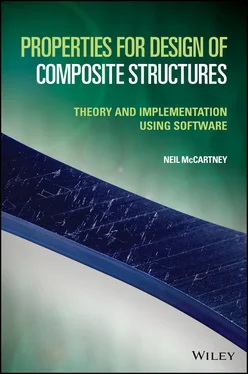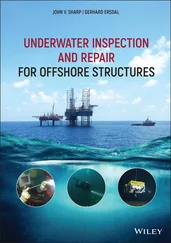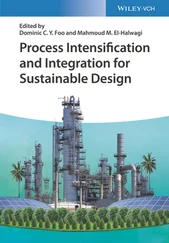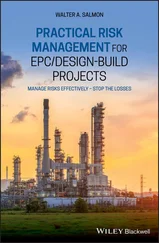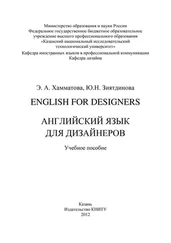Properties for Design of Composite Structures
Theory and Implementation Using Software
Neil McCartney
National Physical Laboratory, Teddington, Middlesex, UK

This edition first published 2022
© 2022 John Wiley & Sons Ltd
All rights reserved. No part of this publication may be reproduced, stored in a retrieval system, or transmitted, in any form or by any means, electronic, mechanical, photocopying, recording or otherwise, except as permitted by law. Advice on how to obtain permission to reuse material from this title is available at http://www.wiley.com/go/permissions.
The right of Neil McCartney to be identified as the author of this work has been asserted in accordance with law.
Registered Office(s)
John Wiley & Sons, Inc., 111 River Street, Hoboken, NJ 07030, USA
John Wiley & Sons Ltd, The Atrium, Southern Gate, Chichester, West Sussex, PO19 8SQ, UK
Editorial Office
The Atrium, Southern Gate, Chichester, West Sussex, PO19 8SQ, UK
For details of our global editorial offices, customer services, and more information about Wiley products visit us at www.wiley.com.
Wiley also publishes its books in a variety of electronic formats and by print-on-demand. Some content that appears in standard print versions of this book may not be available in other formats.
Limit of Liability/Disclaimer of Warranty
While the publisher and authors have used their best efforts in preparing this work, they make no representations or warranties with respect to the accuracy or completeness of the contents of this work and specifically disclaim all warranties, including without limitation any implied warranties of merchantability or fitness for a particular purpose. No warranty may be created or extended by sales representatives, written sales materials or promotional statements for this work. The fact that an organization, website, or product is referred to in this work as a citation and/or potential source of further information does not mean that the publisher and authors endorse the information or services the organization, website, or product may provide or recommendations it may make. This work is sold with the understanding that the publisher is not engaged in rendering professional services. The advice and strategies contained herein may not be suitable for your situation. You should consult with a specialist where appropriate. Further, readers should be aware that websites listed in this work may have changed or disappeared between when this work was written and when it is read. Neither the publisher nor authors shall be liable for any loss of profit or any other commercial damages, including but not limited to special, incidental, consequential, or other damages.
Library of Congress Cataloging-in-Publication Data Names: McCartney, Neil, author. Title: Properties for design of composite structures : theory and implementation using software / Neil McCartney. Description: Hoboken, NJ : John Wiley & Sons, 2022. | Includes bibliographical references and index. Identifiers: LCCN 2021034688 (print) | LCCN 2021034689 (ebook) | ISBN 9781118485286 (hardback) | ISBN 9781118789681 (pdf) | ISBN 9781118789780 (epub) | ISBN 9781118789797 (ebook) Subjects: LCSH: Composite materials--Design and construction. Classification: LCC TA418.9.C6 M3495 2022 (print) | LCC TA418.9.C6 (ebook) | DDC 620.1/18--dc23 LC record available at https://lccn.loc.gov/2021034688LC ebook record available at https://lccn.loc.gov/2021034689
Cover image: © NPL Management Ltd
Cover design by Wiley
Set in 9.5/12.5pt STIXTwoText by Integra Software Services Pvt. Ltd, Pondicherry, India
1 Cover
2 Title page Properties for Design of Composite Structures Theory and Implementation Using Software Neil McCartney National Physical Laboratory, Teddington, Middlesex, UK
3 Copyright
4 Preface
5 About the Companion Website
6 1 Introduction
7 2 Fundamental Relations for Continuum Models
8 3 Maxwell’s Far-field Methodology Applied to the Prediction of Effective Properties of Multiphase Isotropic Particulate Composites
9 4 Maxwell’s Methodology for the Prediction of Effective Properties of Unidirectional Multiphase Fibre-reinforced Composites
10 5 Reinforcement with Ellipsoidal Inclusions
11 6 Properties of an Undamaged Single Lamina
12 7 Effective Thermoelastic Properties of Undamaged Laminates
13 8 Energy Balance Approach to Fracture in Anisotropic Elastic Material
14 9 Ply Crack Formation in Symmetric Cross-ply Laminates
15 10 Theoretical Basis for a Model of Ply Cracking in General Symmetric Laminates
16 11 Ply Cracking in Cross-ply Laminates Subject to Biaxial Bending
17 12 Energy-based Delamination Theory for Biaxial Loading in the Presence of Thermal Stresses
18 13 Energy Methods for Fatigue Damage Modelling of Laminates
19 14 Model of Composite Degradation Due to Environmental Damage
20 15 Maxwell’s Far-field Methodology Predicting Elastic Properties of Multiphase Composites Reinforced with Aligned Transversely Isotropic Spheroids
21 16 Debonding Models and Application to Fibre Fractures and Matrix Cracks
22 17 Interacting Bridged Ply Cracks in a Cross-ply Laminate
23 18 Theoretical Basis for a Model of Ply Cracking in General Symmetric Laminates
24 19 Stress-transfer Mechanics for Biaxial Bending
25 Appendix A: Solution for Shear of Isolated Spherical Particle in an Infinite Matrix
26 Appendix B: Elasticity Analysis of Two Concentric Cylinders
27 Appendix C: Gibbs Energy per Unit Volume for a Cracked Laminate
28 Appendix D: Crack Closure Conditions for Laminates
29 Appendix E: Derivation of the Solution of Nonlinear Equations
30 Appendix F: Analysis for Transversely Isotropic Cylindrical Inclusions
31 Appendix G: Recurrence Relations, Differential Equations and Boundary Conditions
32 Appendix H: Solution of Differential Equations
33 Appendix I: Energy Balance Equation for Delamination Growth
34 Appendix J: Derivation of Energy-based Fracture Criterion for Bridged Cracks
35 Appendix K: Numerical Solution of Integral Equations for Bridged Cracks
36 Index
37 End User License Agreement
1 Chapter 2Figure 2.1 Transformation of right-handed...Figure 2.2 Schematic diagram of part...
2 Chapter 3Figure 3.1 (a) Discrete particle model...Figure 3.2 Dependence of ratio of effective...Figure 3.3 Dependence of effective bulk...Figure 3.4 Dependence of the effective...
3 Chapter 4Figure 4.1 (a) Discrete fibre model and...Figure 4.2 Comparison of results for...Figure 4.3 Comparison of results for...Figure 4.4 Comparison of results for...Figure 4.5 Comparison of results for...
4 Chapter 6Figure 6.1 Method of defining principal... Figure 6.2 Method of defining principal...
5 Chapter 7Figure 7.1 Schematic diagram of the...
6 Chapter 8Figure 8.1 Geometry and loading of a...Figure 8.2 A composite plate (a) in...
Читать дальше
